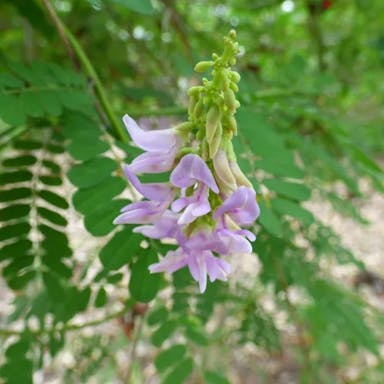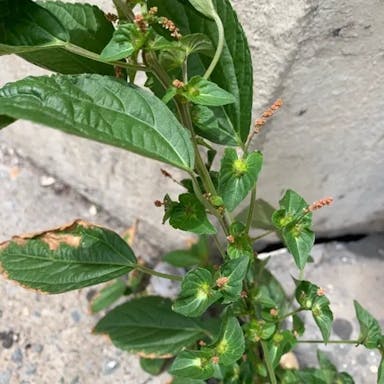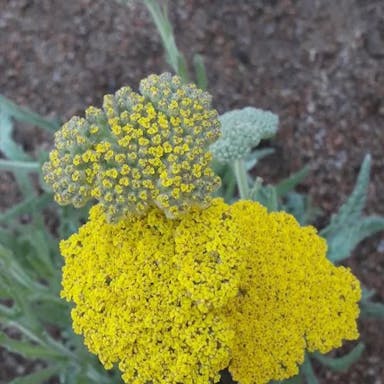Antelope horns, scientifically understood as Asclepias asperula, happens to be a lasting botanical indigenous toward North America. It has a place within the milkweed relatives, given its one of a kind horn-fashioned seed containers. The flora commonly increases inside arid, gravelly soils, frequently established inside grasslands, meadows, and exposed woodlands. Asclepias asperula delivers clusters of tiny, fragrant blooms during shades of light pink toward white, appealing toward butterflies and additional pollinators. The botanical's flowers bloom starting tardy spring toward untimely summer season. Asclepias asperula stays acknowledged for its drought tolerance and talent in direction of prosper inside sundry soil prerequisites. The botanical can attain a peak of 1 in direction of 3 ft and consists of slender, lance-formed leaves. Its seed pods are prolonged and narrow, resembling antelope horns, therefore the well-liked reputation. Asclepias asperula is pretty straightforward in the direction of mature and is a worthwhile addition towards pollinator landscapes and natural environments.
Antelope horns
- Scientific name
- Asclepias asperula
Basic Information
- Apocynaceae Family Asclepias Genus Antelope horns Species
- Apocynaceae > Asclepias > Asclepias asperula
- 83%
- The Completeness of This Encyclopedia
Please help us complete the encyclopedia, Terrarium is a encyclopedia service to be completed with everyone in the world. Currently, this page is 83% complete. For more information on how to contribute, please click here.
- Forb/herb
- Perennial
- Subshrub
- Height
- 60cm ~ 90cm
- Flower Color
- Leaf Color
- Anthesis
- spring, summer
- Sunlight Exposure
Full Sun Long hours of sunlight from morning to afternoon Partial Shade A location in the shade of a tree or where either the morning or afternoon is shaded Full Shade A place where there is no direct sunlight
- Full Sun
- Hardiness Zones
This is an indicator to know to which zone each plant can winter. Knowing the zone of each plant gives you an idea of the cold temperature resistance when grown in the ground without a roof. 2: -42.7 to -40.0 3: -39.9 to -34.4 4: -34.3 to -28.9 5: -28.8 to -23.3 6: -23.2 to -17.8 7: -17.7 to -12.2 8: -12.1 to -6.7 9: -6.6 to -1.1 10: -1.0 to 4.4 11: 4.5 to 10.0
- 7
- Cold resistance
- Good
- Heat resistance
- Good
- Habitat of origin
- United States
- Growth Rate
- Normal
What is Antelope horns (Asclepias asperula)?
What is Antelope horns (Asclepias asperula)
Flower meaning
The flower language commonly used in America for the plant Antelope horns is: - Protection - Resilience - Strength Example: "Strength," symbolizing the ability to withstand challenges and difficulties with courage and determination.
Calendar of Antelope horns (Asclepias asperula)
Calendar
Antelope horns thrive in full sun to partial shade, preferring at least 6 hours of direct sunlight daily. They exhibit good cold tolerance, able to withstand temperatures as low as 20°F (-6°C). In hot climates, they can tolerate high temperatures, but may benefit from some afternoon shade to prevent leaf scorch. During the summer, ensure adequate watering to prevent drying out. In winter, reduce watering to mimic their natural dormant period. Place them in well-draining soil to avoid waterlogged roots. Antelope horns are resilient to drought conditions but may show signs of stress if exposed to prolonged intense sunlight. Aim for an optimum temperature range between 65-75°F (18-24°C) for optimal growth.
0
0
How to grow Antelope horns (Asclepias asperula)
Watering
Antelope horns can be propagated through division, cuttings, and leaf cuttings. Division involves separating the plant into sections with roots and stems. Cuttings are taken from healthy stems and rooted in a suitable medium. Leaf cuttings involve removing a leaf and placing it in a growing medium to develop roots. To maximize propagation success, it is advisable to use a combination of methods. Harvesting cuttings or leaves should be done in the morning when the plant is well-hydrated for better results.
0
0
Soil and Fertilizer
Antelope horns thrive in well-draining soil with a pH level between 6.0 and 7.0. After the winter period, apply fertilizer once a month. Check the soil regularly. The plant needs moist but not soggy soil for healthy growth. Use a balanced liquid fertilizer diluted to half strength. Avoid the leaves when applying it. Use a fertilizer with numbers like 10-10-10. Adjust the amount as needed based on the plant's growth. Use sandy or loamy soil with lots of organic matter.
Sunlight and Place
Antelope horns thrive in full sun to partial shade, preferring at least 6 hours of direct sunlight daily. This plant can withstand cold temperatures as low as 20°F (-6°C). In hot areas, it is heat tolerant but some shade in afternoon may help prevent leaf scorching. Give enough water in summer to prevent drying out. In winter, water less often to avoid root rot. Well-draining soil is best to prevent waterlogging. Although resilient in different light conditions, this plant grows best with 6-8 hours of sun per day.
Advanced Information of Antelope horns (Asclepias asperula)
Pruning
Antelope horns are available in two main varieties: 1) A. asperula var. capricornu, known for its vibrant orange flowers and 2) A. asperula var. asperula, recognized for its pale yellow blooms. When selecting seeds, opt for plump, firm ones without signs of damage. For seedlings, choose those with healthy green leaves and sturdy stems. Ensure the roots are well-developed and not root-bound. Consider the growth habit of each variety; A. asperula var. capricornu tends to be more compact, while A. asperula var. asperula can grow taller. Select based on your garden's space and design preferences.
0
0
Planting and Harvest
Antelope horns, also known as Asclepias asperula, is a perennial plant native to North America. It is characterized by its slender, erect stems and narrow leaves covered in fine hairs, giving it a rough texture. The plant produces unique clusters of greenish-white flowers with purple accents, attracting pollinators like butterflies and bees. The flowers of Antelope horns have a distinct horn-like shape, hence the name. This plant is a member of the milkweed family, known for its milky sap and importance in supporting monarch butterflies. Antelope horns typically bear elongated seed pods filled with silky fibers that aid in wind dispersal. It is a relatively low-maintenance plant that thrives in well-drained soil and full sunlight. Antelope horns can reach heights of up to 3 feet and spread outwards, making it an attractive addition to gardens and natural landscapes.
0
0
Propagation
The flower language commonly used in America for the plant Antelope horns is: - Strength - Protection - Resilience One typical example is: - Strength: Antelope horns symbolize strength due to their sturdy and resilient nature, reflecting the ability to withstand challenges and adversity. Birth flowers are specified by month and date only.
0
0
Pests and Diseases
For Antelope horns, water every 7-10 days during the growing season, ensuring the soil is evenly moist but not waterlogged. During winter, reduce watering to every 2-3 weeks, allowing the soil to partially dry out between waterings. Monitor soil humidity by inserting a finger 1-2 inches into the soil; if it feels dry, it's time to water. Water with 1-2 cups of water per plant, adjusting based on the size of the container and environmental conditions. Avoid overhead watering to prevent fungal diseases, instead water at the base of the plant. Consider using a well-draining soil mix to prevent waterlogging and root rot.
0
0
Habitat of Antelope horns (Asclepias asperula)
Habitat
Toxicity of Antelope horns (Asclepias asperula)
Health Benefits
- edible
- Inedible
- Toxic
- toxic
NO DATA
Toxic for dogs and cats
NO DATA
Q&A of Antelope horns (Asclepias asperula)
- Is there a recommended way to choose Antelope horns?
Antelope horns thrive in well-draining soil with a pH level between 6.0 and 7.0. They prefer sandy loam or loamy soil rich in organic matter. Fertilize Antelope horns with a balanced liquid fertilizer diluted to half strength every 2-4 weeks during the growing season. Apply the fertilizer directly to the soil around the plant, avoiding contact with the foliage. Reduce fertilization frequency to once a month during the dormant winter period. Use a slow-release fertilizer in spring to promote healthy growth. Monitor the plant for signs of nutrient deficiencies and adjust the fertilizer regimen accordingly. Regularly check the soil quality to ensure optimal conditions for Antelope horns.
0
0
- choice
Antelope horns have varieties like 'Milkweed' and 'Spider milkweed'. 'Milkweed' kind has bright orange flowers and is well-liked by pollinators. In contrast, 'Spider milkweed' has greenish-white blooms and can tolerate drought better. For seeds, select plump and firm ones with no damage. Pick seedlings having healthy green leaves and strong stems. Make sure the roots are developed well and not root-bound. It's key to choose varieties based on garden environment and aesthetic.












